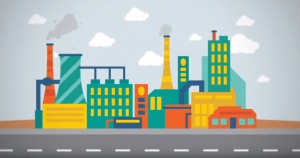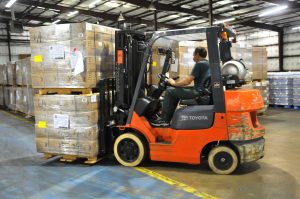
Doug Sharpe
President of Elasto Proxy
Does your office still use computer printers and copy machines? Thirty-nine years ago, Business Week magazine foresaw a paperless office. Although some predictions in The Office of the Future have come true, others have not. Today, I’m able to “call up documents from my files on my screen,” as George E. Parke of the Xerox Research Center correctly conjectured. Yet there’s still a place for paper at work.
According to The Economist, global consumption of office paper doubled in the last two decades of the twentieth century. Since 2001, however, paper usage has fallen. What explains the change? Is it because office workers are more environmentally conscious, or at least more conscious of paper waste? Perhaps. Today, as industry embraces a new form of “printing”, will the consumption of plastic feedstocks used in additive manufacturing lead to a dramatic increase in waste, followed by an eventual decline?
Red Solo Cups Keep the Party Going
Several years ago, American country star Toby Keith sang “Red Solo Cup, I fill you up. Let’s have a party”, a reference to the disposable red plastic cups used at many outdoor celebrations. Those red solo cups usually end up in landfills, however, and are slow to biodegrade because they’re made of polystyrene, an inexpensive thermoplastic that’s also used in many packaging materials. If consumers are becoming more environmentally conscious, will our consumption of red solo cups fall like printer paper?
If the Better Future Factory (BFF) is successful, there’s no need to echo Willie Nelson and sing “Turn out the lights, the party’s over” just yet. Founded by five industrial design engineering graduates from Delft University of Technology in The Netherlands, BFF aims to connect local streams of plastic wastes to the growing market for 3D printers and plastic feedstocks. Today, many 3D printers – especially the desktop models used at home – consume so-called “virgin plastics” instead of recycled materials.
The Perpetual Plastic Project
In a recent article in The Guardian, a national daily newspaper from Great Britain, BFF described its Perpetual Plastic Project, an interactive recycling system that lets consumers operate machines that turn plastic waste into 3D printer filaments. The global market for these feedstocks is growing, and is expected to reach $669-million (USD) this year. Plastics such as polystyrene aren’t the only materials used in 3D printing, but many consumer applications use polymers instead of metals or ceramics.
For fans of additive manufacturing, the Perpetual Plastic Project is both entertaining and educational. First, plastic scrap such as red solo cups are cleaned and dried. Then they’re shredded and filtered. Next, the recycled plastic is extruded and spooled into filaments. Finally, the Perpetual Plastic Project provides help with product design and, of course, additive manufacturing. Visitors to these recycling “events” get to keep what they make, but you’ll have to travel to Europe, Asia, or Africa to participate.
Industrial Plastic Solutions?
On its website, the Better Future Factory (BFF) recognizes that 3D printing has the “potential” to spark “a new industrial revolution.” These days, that claim isn’t as dramatic as predictions of a paperless office were back in 1975. The Perpetual Plastic Project may be enough for some consumers, but is there an industrial-scale solution for manufacturers? Recycling those red solo cups from your next office party may not provide enough plastic – or the right kind – for your company’s next 3D printed prototype. Prototype injection molding also uses plastic.
e In the last year, we’ve leveraged the power of 3D printing to support mold making, prototyping, and low-volume production of auto parts for an electric vehicle. Our growing, global company has also introduced a line of green rubber products for a wide range of industries, including building and construction, automotive, and mass transit.
How Can We Help You?
Do you have questions about recycled elastomers or biodegradable plastics? Would you like to learn more about our experience with 3D printing, or how green rubber products can support your product designs – and your bottom line? By listening to all of your application requirements and analyzing all of your needs, our solutions providers can help.
Please contact us for more information, or join the conversation on our social media channels. Look for a post with a link to this blog entry on LinkedIn, Facebook, Google+, and Twitter. Elasto Proxy has a YouTube channel, too. Finally, please subscribe to our free e-newsletters. They’re a great source of information delivered right to your email inbox, and they provide links to blog entries like this one.










